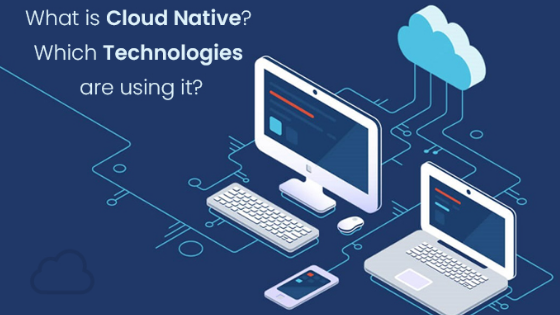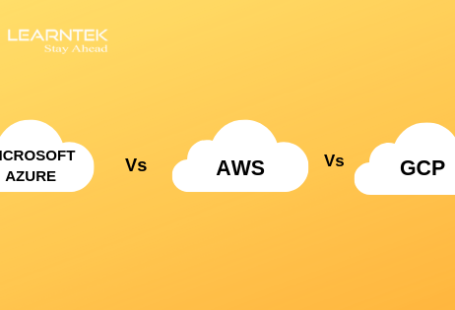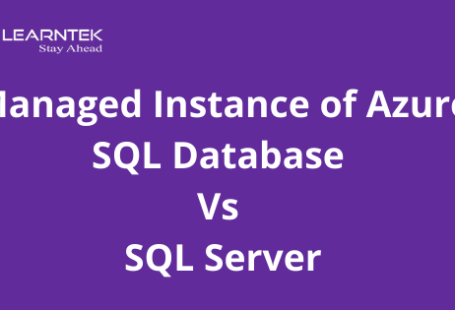Cloud-native is an approach for building and running applications. Cloud-native is referencing how applications are created and deployed. Cloud-native implies that the app lives in the public cloud. In 2015 Cloud Native Computing Foundation (CNCF) launched by Linux. The Cloud Native Computing Foundation (CNCF) defines native cloud is an open-source software stack to be containerized, where each part of the app is packaged in its container. Each part Native cloud is dynamically orchestrated, actively scheduled and managed to resource utilization. Native cloud microservices oriented to increase the overall agility and application maintainability.
We can expect to see further growth in cloud-based services and container-based architectures in many eminent Software development agencies in the near future.
How the Cloud-native app development would benefit the industries?
The cloud-native app runs in the distributed and elastic nature that needed by modern cloud computing platforms. Cloud-native app development includes microservices, DevOps, agile methodology, cloud platform and containers like Docker, Kubernetes, and continuous delivery. In cloud-native app development, it requires a very different architecture than the traditional enterprise applications. Cloud-native applications are likely to be written in a web-centric language that means, CSS, HTML, Java, JavaScript, PHP, GO, Node.js, Ruby, and Python. Cloud-native applications are always available and up to date. Cloud-native applications generally take advantage of the elasticity of the cloud by using increased resources during a use spike.
A cloud-native application is capable to work in a virtualized space and sharing resources with other applications. On the other hand, many other on-premises applications either don’t work well in a virtual environment or don’t work at all and in that case, it requires a non-virtualized space. Storage and network are completely different in the cloud. Cloud-native apps are more modular design and many functions are broken down into microservices. Apart from that, it is also important to understand which cloud service is the best to adopt for the agency.
Advantages of Cloud-Native Architecture

Cloud-native app benefits such as delivery, mostly speed, and agility in app management. Good processes that are executed repeatedly in the cloud-native app as needed by automation and orchestration tools rather than through manual intervention. Cloud-native app developers should look to automate virtually anything they do more than once to enable repeatability, agility, scalability, self-service, and audit and control. There are numerous advantages of Cloud Native for enterprises are summarized as follows-
• Support various languages- Cloud-native architecture can support a vast range of languages and frameworks including Asp.net, Node, Java and many more.
• Elevate Agility and productivity – Organizations can bring new ideas to production within less time instead of weeks and months, resulting in a greater rate of invention and competitiveness. Programmers use fully automated continuous integration continuous delivery pipelines (CICD) to rapidly test and push new code to production with DevOps and GitOps best practices.
• Most secure services- With cloud-native applications, one can use microservices architecture which can identify and isolate the impact of a failure in order to reduce any downtime. With microservices and containerization, applications can be developed to become fault-tolerant with the ability to self-heal. This also enhance user-experience as your clients can experience highly secure performance.
• Declarative Model – Declarative, configuration-based model support self-healing. Istio Kubernetes, and other projects are based on this model. In this declarative model, any deviation from the required state is automatically healed by the system. Declarative models minimize the requirement for imperative automation scripts that can be costly to build and maintain.
• Automotive capabilities- Cloud-native applications can be highly automated. They play very well with the concept of infrastructure in terms of code. A certain level of automation is needed simply to handle these big and complex applications.
• Ease of management- Cloud technology comes with comprehensive and advanced ecosystems that make infrastructure management simple. The cloud technology is constantly evolving to accommodate even the hardest applications on its own. PaaS services like Azure Functions and AWS Lambda make it easy for even SMBs with a limited cost to develop technology-driven applications on the public cloud. With serverless architecture, a cloud service provider can provision the instances needed to run the functions of client’s code without their having to spend on resources. One not needed to configure the network or allocate storage for running a code – the serverless architecture takes care of everything.
• Scale you DevOp teams — Underlying infrastructure is decoupled from the applications, there is bigger consistency for lower levels of cloud native application infrastructure. This permits devOps team to scale much more efficiently.
Need of Cloud-native in the organization

Cloud-native more than the use of cloud platforms. Software architecture and additional tooling, like CI/CD or other automation tools play an essential role, when leveraging the advantage of the cloud. In addition, in an organization context
organizational processes are another challenge on the way to cloud-native success.
One of the key reason’s programmers prefer cloud platforms such Azure, Google Cloud Platform or AWS is that they can access a large variety of distinct cloud resources and services within seconds. They just want to create an account, pull out their credit card and are ready to get going. For companies, cloud providers offer their accounts that group together accounts across the organization.
In many cases, programmers are not permitted to create an account belonging to the company self-service. For this reason, enterprises often reuse existing tools or processes that originate from older times, instance from ordering on-premise IT hardware such as monitors or phones. Original cloud-native experience is being affected is the high risk, as barriers are posed between the programmer and the cloud.
Many cloud technologies help to speed up the rate at which organizations move new ideas to the market. Cloud-native technologies for applications:
• Kubertnetes: It is an open-source container management platform that is used in almost every public cloud environment and it was built at Google. It was one of the first cloud-native technologies.
• Prometheus: This is a monitoring tool for containerized applications. It has become the standard monitoring services for many container-based infrastructures.
• Istio: This is a service mesh which provides interconnections between multiple microservices required by the applications.
• CoreDNS: The default DNS server that is used in many cloud-native technologies, including Kubernetes. It is optimized for flexibility, performance and service discovery.
• hRPC: This is a remote procedural call framework that is developed by Google. hRPC optimized for large–scale multiplatform cloud-native architectures.
Conclusion
Doubtless to say Cloud Technology would be dominating among the upcoming trends because it eliminates the biggest concerns of the industries and businesses i.e., storage and security issues. As you understand how cloud-native applications are widely used today. Shortly, we can expect to see a further surge of interest in cloud-based services and container-based architectures. Apart from that so many industries moving to adopt cloud-based architectures for their work premises.
Author Bio: Kapil Panchal – Digital Marketing Manager
I am working as a Digital Marketing Manager in a reputed Custom Software Development Company. Being a technical writing enthusiast and a goal-oriented individual with honed communication skills, I have served in the Information technology, Services, and Product industry. Having a high-energy level, I absolutely love what I do and I’m passionate about being better every day.






